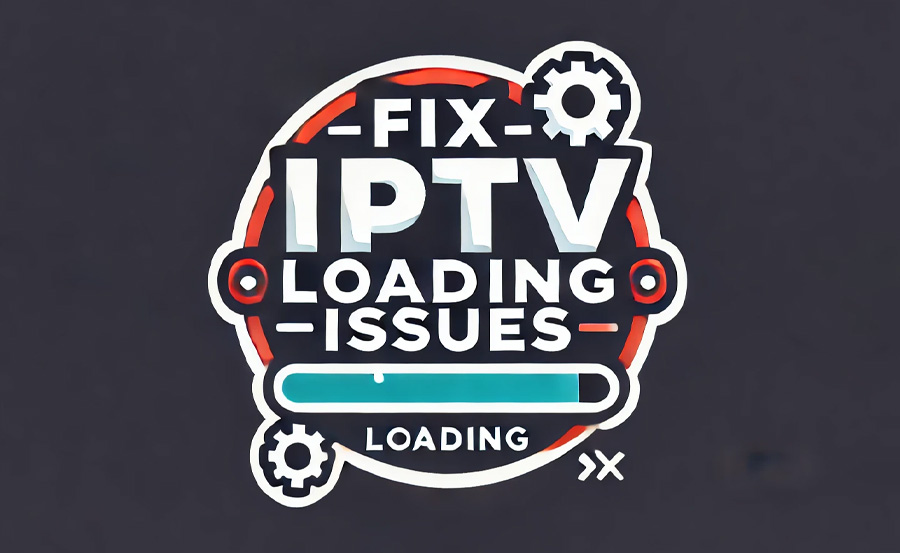IPTV offers convenient access to a world of streaming channels, movies, and live TV, but like any technology, it sometimes runs into loading issues that can disrupt the experience. Whether you’re facing buffering, channels not loading, or poor video quality, there are solutions to get your IPTV service back on track. This guide will help you troubleshoot and resolve common IPTV loading problems effectively.
Buy 1 Year IPTV Subscription Now
Understanding Common IPTV Loading Issues
The most frequent IPTV loading problems include buffering, channels failing to load, slow or poor-quality streams, and audio-sync issues. These issues typically stem from network connectivity, device compatibility, or IPTV server performance. By identifying the root cause, you can apply the right solution and improve your streaming experience.
Step-by-Step Solutions for Common IPTV Loading Problems
1. Buffering During Playback
Buffering is a common frustration for IPTV users and is usually caused by network instability or low internet speeds.
- Solution:
- Check Your Internet Speed: Ensure you have at least 10 Mbps for HD streaming and 25 Mbps for 4K. Run a speed test to check your current connection.
- Switch to Ethernet: A wired connection offers greater stability than Wi-Fi, reducing buffering.
- Increase Buffer Size: Many IPTV apps allow you to adjust the buffer size in the settings. Increase it slightly to accommodate any temporary dips in speed.
2. Channels Not Loading
If channels are not loading at all, the problem could be with your IPTV playlist, server, or app settings.
- Solution:
- .Check Your Playlist URL: Ensure the M3U link or portal URL from your IPTV provider is correct. A slight typo can cause loading issues.
- Restart Your IPTV App: Close and reopen the app to refresh the connection.
- Verify Subscription Status: Sometimes, an expired subscription can cause channels to stop loading. Ensure your account is active with your IPTV provider.
3. Poor Video Quality
Low video quality is often due to insufficient bandwidth or app settings that aren’t optimized for high resolution.
- Solution:
- Adjust Video Quality Settings: In the app settings, select a higher video quality if your network can support it. Alternatively, lowering the quality can help prevent buffering if your internet speed is slower.
- Limit Other Devices: Disconnect other devices using your network to free up bandwidth for IPTV streaming.
- Update Your App: Ensure you’re using the latest version of the IPTV app, as updates often improve performance and compatibility.
4. Audio and Video Out of Sync
Audio and video sync issues can occur due to device compatibility problems or temporary app glitches.
- Solution:
- Restart the Channel: Sometimes, restarting the specific channel or video will resync audio and video.
- Adjust Audio Sync Settings: Some IPTV apps have audio sync options in their settings. Adjust the delay if available.
- Reboot Your Device: Restarting your TV or streaming device can often resolve sync issues.
5. IPTV App Crashing or Freezing
If your IPTV app frequently crashes or freezes, it could be due to memory limitations on your device or outdated software.How to Stream IPTV Effortlessly Using VLC Player
- Solution:
- Clear App Cache: In your device’s settings, find the IPTV app and clear the cache. This will remove temporary files that may be causing the app to slow down or crash.
- Update Firmware: Ensure that your smart TV or streaming device is running the latest firmware, as updates can improve app stability.
- Reinstall the App: Uninstall and reinstall the IPTV app to refresh the installation and resolve any persistent issues.
Advanced Solutions for Persistent IPTV Loading Issues
If the basic troubleshooting steps don’t resolve your loading problems, consider these advanced solutions:
1. Use a VPN to Overcome ISP Throttling
Some ISPs throttle bandwidth for streaming services, which can cause buffering or low quality. A VPN (Virtual Private Network) can mask your IPTV activity, reducing throttling.
- Tip: Use a high-speed VPN provider to avoid further slowing down your connection.
2. Change DNS Settings for Improved Stability
Switching to a public DNS server, like Google DNS (8.8.8.8 and 8.8.4.4), can improve your connection stability and speed.
- Tip: Adjust DNS settings on your router to apply the change across all devices connected to your network.
3. Check Device Compatibility and Update Hardware if Necessary
Certain IPTV apps may work better on specific devices. If you’re using an older smart TV or streaming box, upgrading to a newer device may improve performance.
- Tip: Android boxes and dedicated IPTV players often provide better compatibility for IPTV apps compared to built-in smart TV apps.
Preventative Tips to Keep Your IPTV Service Running Smoothly
Maintaining a stable IPTV experience involves more than just quick fixes. Here are some preventative steps:
- Regularly Restart Your Router:
- Reboot your router every week or so to keep your connection fresh and stable.
- Schedule IPTV App Updates:
- Enable automatic updates for your IPTV app, so you always have the latest version with performance improvements.How to Use Plex for IPTV Streaming: A Complete Beginner’s Guide
- Use a Dedicated Streaming Device:
- A dedicated device, like an Android box, Fire Stick, or Roku, often offers better performance for IPTV than built-in smart TV apps, which can be limited by the TV’s hardware.
- Monitor Your Internet Speed:
- Regularly check your internet speed to ensure it’s sufficient for streaming. This can help identify connection issues before they impact your IPTV experience.
Conclusion
IPTV loading problems can be frustrating, but with the right troubleshooting steps and preventative measures, you can enjoy a smooth streaming experience. Whether it’s buffering, poor quality, or sync issues, these solutions will help you resolve common problems quickly and efficiently. By ensuring your internet connection is stable, keeping your app updated, and optimizing device settings, you’ll minimize disruptions and make the most of your IPTV service.

